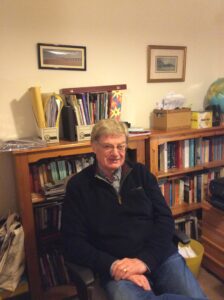2 September 2021
The Theory of Everything
By Paul Branch
 Much has been happening this past month while Shaw Sheet has been dormant, with many issues left over and still undecided as we say farewell to so-called summer. Will Paddy Power pay out on Boris Johnson’s gamble of lifting Covid restrictions? Has Joe Biden played his last trump card of not being Donald Trump? When will embarrassed extremist Brexiteers stop talking about it and blaming the unfolding new reality on the largely silent minority? But in the world of science some things are becoming clearer.
Much has been happening this past month while Shaw Sheet has been dormant, with many issues left over and still undecided as we say farewell to so-called summer. Will Paddy Power pay out on Boris Johnson’s gamble of lifting Covid restrictions? Has Joe Biden played his last trump card of not being Donald Trump? When will embarrassed extremist Brexiteers stop talking about it and blaming the unfolding new reality on the largely silent minority? But in the world of science some things are becoming clearer.
NASA scientists who recently unleashed news of possible impending global doom with their predictions of our high-speed encounter with the huge Bennu asteroid (Shaw Sheet of 22 July will serve as a memory jogger) have sharpened their computers and come up with an enhanced forecast of exactly when to expect its arrival. The odds have become slightly longer over the past month: now standing at 0.037%, but with a very exact date of 24 September 2182 … a Tuesday, time not yet specified but presumably between 8 am and 6 pm if Amazon are still in business. Anyone else planning on still being around then needn’t rush to review their Home Buildings and Contents insurance policy just yet, but maybe bear it in mind for the future.
Up in the clouds, Elon Musk’s nascent Starlink broadband satellite system has come in for pungent criticism in some quarters with the revelation that its small rooftop antennas have become targets for nesting pigeons. These birds deposit piles of poo on the dishes, thereby causing severe communications outages. Because of the low orbit characteristics of the system, and unlike TV antennas such as those used by Sky, Starlink antennas point straight up, so the poo just sits there. As the wavelength of the satellite signals (around 3 cm) and a typical dimension for pigeon poo are very similar, the microwave energy in the signals is absorbed instead of being received or transmitted. With Sky satellite signals operating in the same frequency range, rain droplets are the issue, but of course these run off the surface and do not accumulate once it stops raining, unlike Musk’s pigeon droppings.
Between the present and the distant future there are other scientific activities afoot deserving some attention, concerning theoretical aspects of our presence on this planet as opposed to the two practical issues highlighted above. When Albert Einstein died in 1955 he left a legacy unlikely to be exceeded, with his various treatises on relativity (both special and general) and the structure of the universe, quantum mechanics and particle theory, gravitational theory, thermal properties of light and the foundation of the photon theory. But there are discontinuities in some of his assumptions, anomalies between his various theories which prevented the attainment of the holy grail, the quest of all physicists for one simple, neat and all-encompassing model of nature at all levels.
In the mid-1960s two eminent physicists, Leonard Susskind and Michio Kaku, suggested ways in which the Theory of Everything might evolve from Einstein’s work, bringing together relativity and quantum concepts in perhaps the most controversial Big Idea in all of science. Known as String Theory, it’s turning out also to be a Big Disappointment as no one has yet found a clear way to prove it works, but then it’s such a complex idea that it also hasn’t been disproved. String Theory suggests that, at the subatomic level, everything is composed of minute pieces of vibrating string whose patterns determine their physical attributes. These strings exist in a world of not just the four dimensions in which we mere mortals exist (the three spatial dimensions plus time) but eleven, with the extra seven dimensions being compacted to such a small degree that they are invisible to us.
The issue with String Theory is how to take it beyond its current mathematical formulation so that it can be tested, or indeed observed, like the stars and planets. The theory deals with particles on such a microscopic level that there is no technology available today to make the necessary observations, nor indeed is there much likelihood that there will be in the future. For String Theory to become a reality we would need to break out of our natural limitation of four dimensions to gain access to the other (supposedly) seven dimensions which is no mean task. We would also like to know if the theory fits with the Big Bang concept of how our universe was born, and how it has continued to expand at an accelerating rate of knots known as cosmic inflation ever since. Such considerations have led to Nobel Prizes in Physics being awarded to String Theory researchers in now perhaps the most active field of physics, especially in North America.
However just because we’re stuck in our current four-dimensional universe doesn’t necessarily mean that other dimensions are not possible elsewhere. The Americans have been having fun and games trying to explain mysterious “extra-terrestrial” activities recorded by military pilots, and have failed to state whether, in their view, these were natural phenomena caused by an unknown, albeit highly talented, earthly entity (China, perhaps), or aliens with supercharged technology. They hedged their bets and stated that, without clear evidence one way or the other, it could be either. Beings gifted with the ability to interact out of and back into other dimensions would present a possible explanation, if a far-fetched one given our lack of understanding of what’s involved.
An alternative explanation comes from religious quarters which suggest that multi-dimensionism, as well as the creation of the universe from a standing start, would be compatible with the existence of a Supreme Being. For this they have the text of Isaiah (55:8-9) as support: “For as the heavens are higher than the earth, so are my ways higher than your ways and my thoughts higher than your thoughts”. String Theory, otherwise known as the “God Equation”, has its proponents and detractors, which makes it an even more fascinating topic for the future as it’s often the opponents of a theory who create the tension needed for a definitive answer to appear. And as its co-founder, Michio Kaku, once said when asked: “I believe in god, but not that God”. Food for lofty thought indeed, but coming back down to earth for a moment it does all put flesh on the bones of the eternal question of just how long is a piece of string?
Tile photo: Universal Eye on Unsplash


